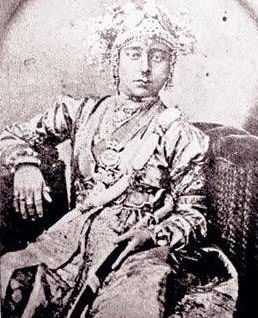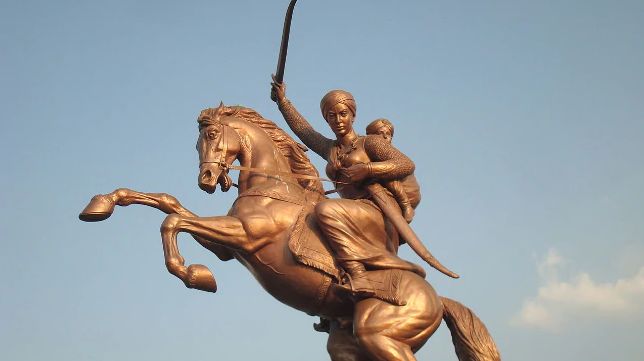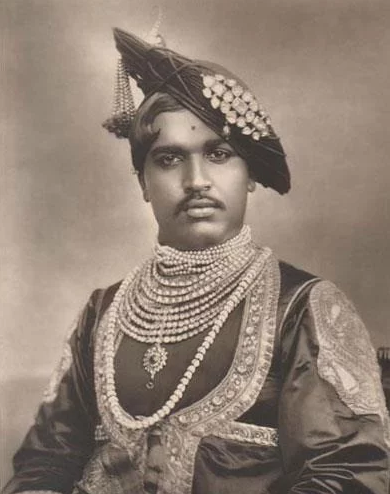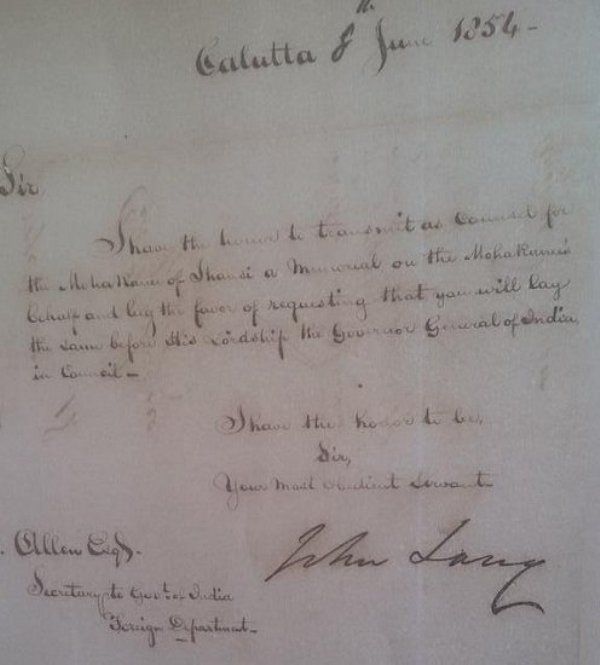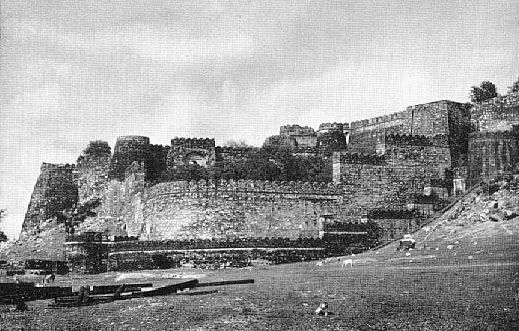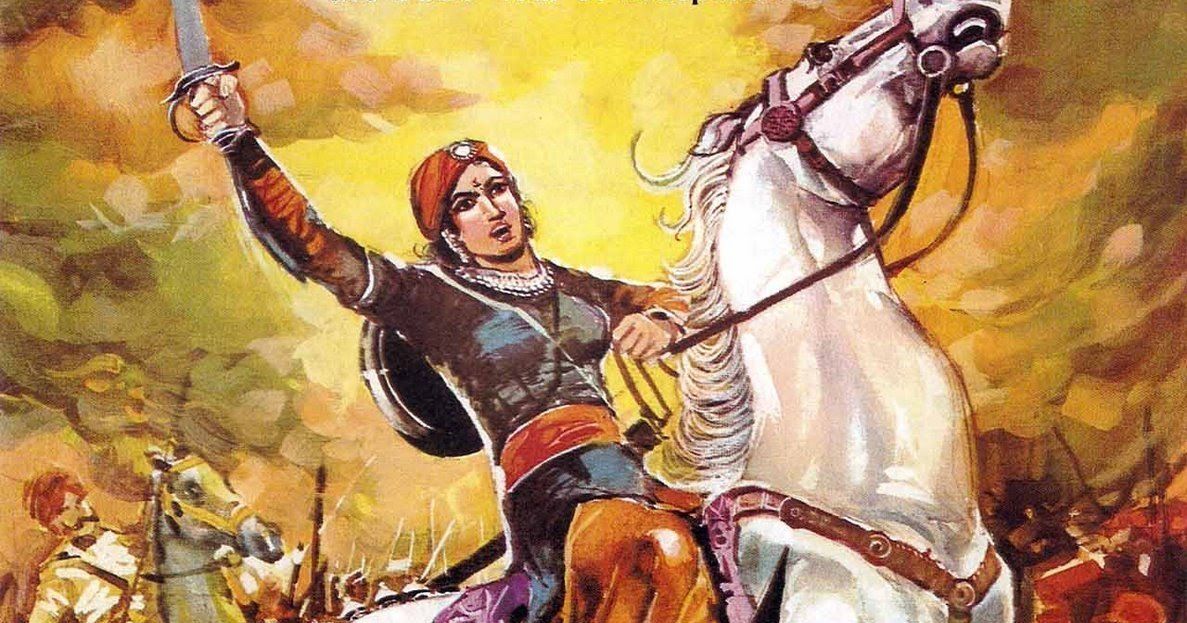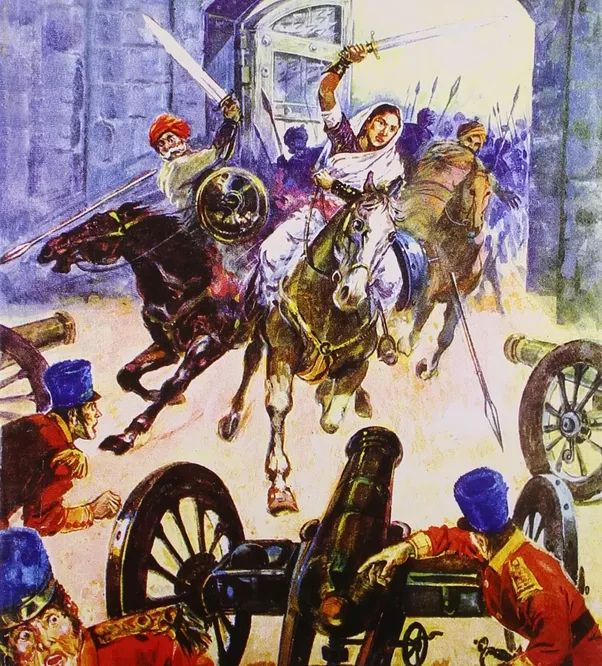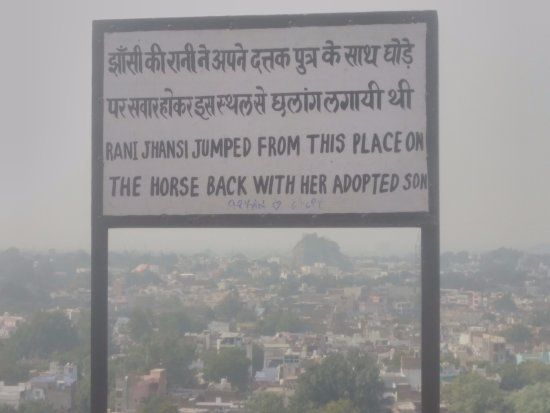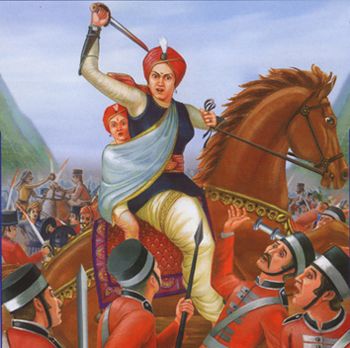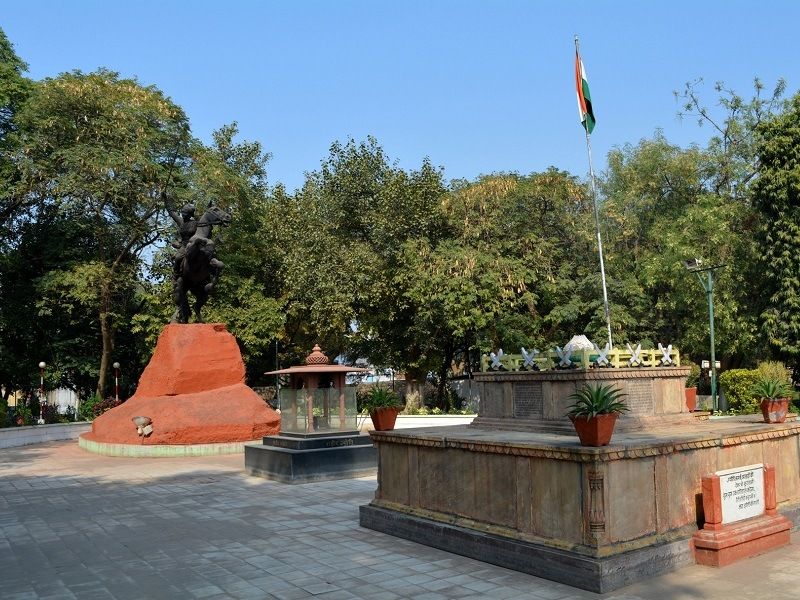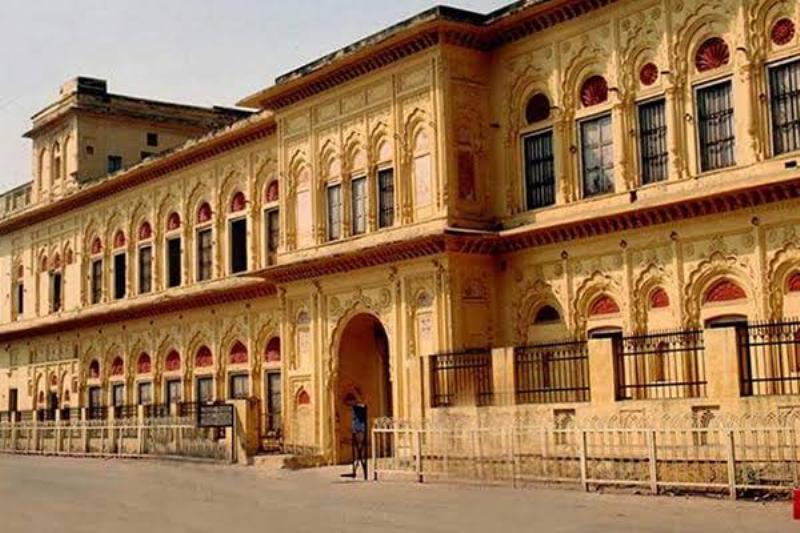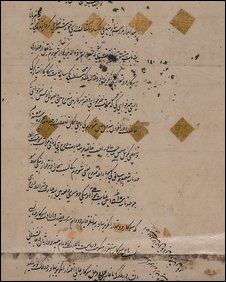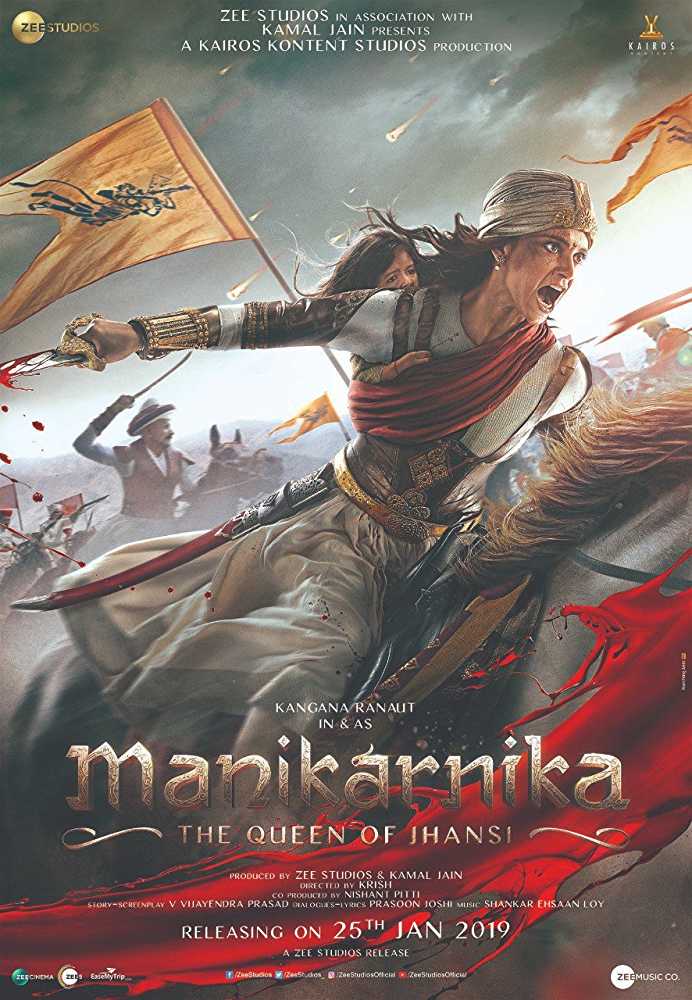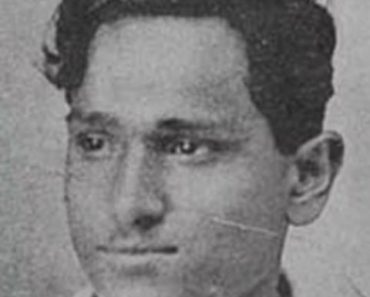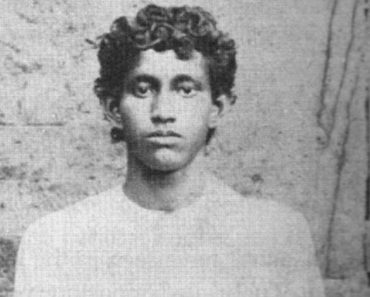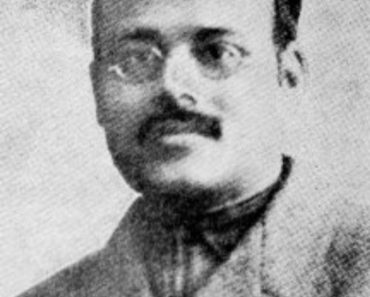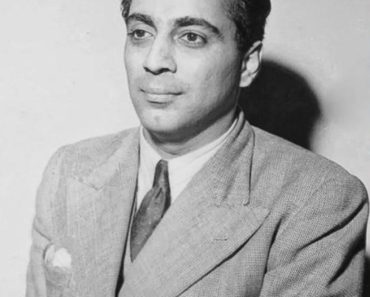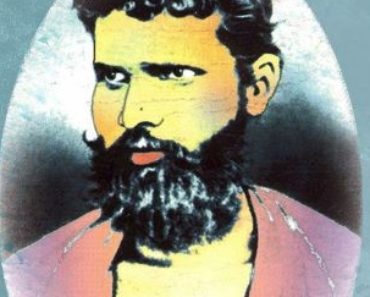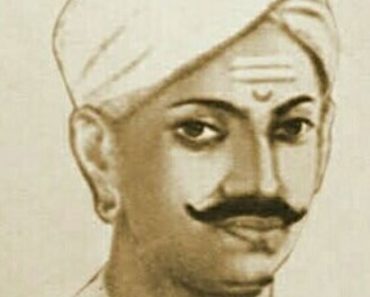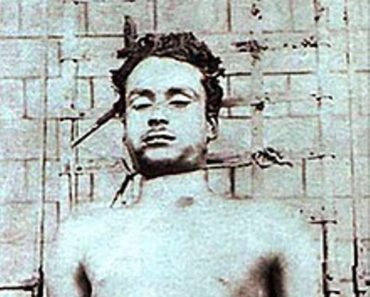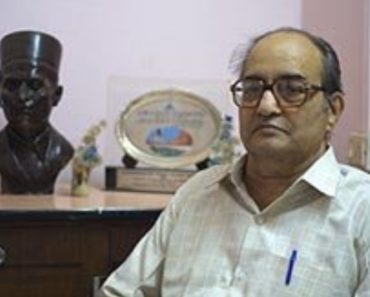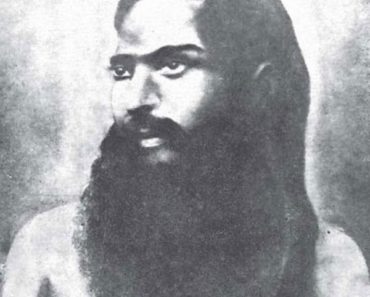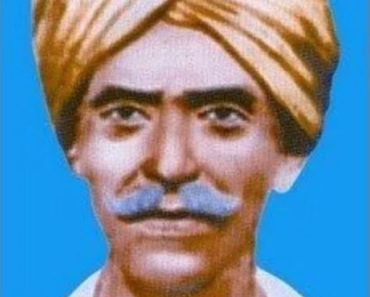Rani Lakshmibai was the queen of Maratha-ruled princely state of Jhansi, the present-day Jhansi district of Uttar Pradesh. She is considered to be one of the most prominent leaders during the Indian Rebellion of 1857, who became a figure of resistance against the British Raj in India.
Contents
Wiki/Biography
Rani Lakshmibai was born as ‘Manikarnika Tambe’ on Wednesday, 19 November 1828 in Benaras (present-day Varanasi, Uttar Pradesh), Kingdom of Kashi-Benaras. Her zodiac sign is Scorpio.
She was educated at home and learned to read and write. Unlike, other girls in society, she was given more independence in her childhood and learned different warfare techniques such as horse riding, fencing, shooting, and Mallakhamba with her childhood friends, Nana Sahib and Tantia Tope. Rani was supported and motivated by her father to learn these tactics, which made her an independent and courageous girl.
Family, Caste & Husband
Rani Lakshmibai was born into a Marathi Karhade Brahmin family. Her father, Moropant Tambe was an official at the court of Peshwa Baji Rao II of Bithoor District. Her mother’s name was Bhagirathi Sapre, who had died when Laxmi was four years old. On 19 May 1842, at the age of 14, Rani got married to Maharaja of Jhansi, Gangadhar Rao Newalkar.
Gangadhar’s first wife had died before giving birth to the heir of the kingdom. In 1851, Rani Lakshmibai and Raja Gangadhar were blessed with a son named Damodar Rao. However, the child died of chronic illness after 4 months. Later, in the presence of a British Political Officer, the couple adopted a child named Anand Rao, the son of Raja’s cousin, a day before Gangadhar’s death in November 1853. The child was named Damodar Rao.
The Doctrine of Lapse and Jhansi
After the death of Raja Gangadhar Rao, their adopted child, Damodar Rao, was slated to become his legal heir, and Rani Lakshmibai would become the Viceroy of Jhansi for a lifetime. However, Lord Dalhousie, the Governor-General of India from 1848 to 1856, implemented the Doctrine of Lapse in 1859, which rejected the Damodar’s claim to the throne.
According to this Doctrine, the British East India Company could annex any princely state under the suzerainty of the company, if the ruler had died, and the state had no legal male heir to take up the throne. When Rani Lakshmibai was informed of this, she refused to surrender Jhansi to British.
With the help of an Australian Lawyer, John Lang, Rani filed a petition in London to oppose the annexation of Jhansi, but Rani’s plea was rejected. Reportedly, it was one of the factors responsible for the 1857 Indian Rebellion. During the time of Doctrine of Lapse, the East India Company acted as both, the Judge as well as the Defendant with no proper court of law. In 1854, Rani’s appeals against the Doctrine of Lapse was rejected multiple times, and Lakshmibai was granted a pension of Rs. 60,000/- and was ordered to move to Rani Mahal; leaving the Jhansi fort. However, Lakshmibai was persistent in protecting the throne of Jhansi. Reportedly, she initially refused the pension and threatened to leave Jhansi. In many fictional accounts, she cried-
I shall not surrender my Jhansi” (Main apni Jhansi nahi doongi)
These are the words, which are delivered in ballads, songs, and poems, over the ages.
The Revolt of 1857
On 10 May 1857, the Indian Rebellion, in the form of Sepoy Mutiny, arose as a response to the oppressive rule of the British in Meerut. Gradually, unrest began to spread in various territories of India, which culminated in the form of the First War of Indian Independence. When the news of Rebellion reached Jhansi, Lakshmibai asked for permission from Captain Alexander Skene to raise an army and Skene agreed. The city was in the midst of regional unrest and to give assurance to her subjects, Rani conducted a Haldi-Kumkum ceremony with all the women of Jhansi. In June 1857, rebels of the 12th Bengal Native Infantry seized the Star Fort of Jhansi and massacred 40 to 60 European officers of the garrison along with their wives and children. It is still the subject of debate as to whether Rani was involved in the massacre or not. An army doctor, Thomas Lowe, after the rebellion broke, characterised Rani as-
Jezebel of India … the young rani upon whose head rested the blood of the slain”
Following this, she wrote a letter to Major Erskine, the commissioner of Saugor division, explaining him the account of the events, deploring the massacre and asked him for help. In reply, Erskine requested the queen to manage the “District for the British Government” until the arrival of a British Superintendent. Meanwhile, Rani’s forces defeated an attempt by the mutineers to assert the claim to the throne of a rival prince, Sadashiv Rao (nephew of Maharaja Gangadhar Rao) who was later captured and imprisoned. Thereafter, she defended Jhansi from being invaded by the neighbouring armies of Orchha and Datia; whose intention was to divide Jhansi among themselves. She intensified Jhasi’s defences; accumulating a ‘volunteer army’ of 14000 rebellions, which had many brave warriors like Tantia Tope, Nana Rao Peshwa, Gulam Gaus Khan, Dost Khan, Khuda Baksh, Deewan Raghunath Singh, Deewan Jawahar Singh, and also the women warriors such as Jalkari bai, Sundar-Mundar, and many more. Women were given military training, which strengthened them to fight against the British troop.
In 1858, General Hugh Rose, a Commander of the British forces, arrived and found the palace heavily guarded. Rose demanded the surrender of the city and told to the queen that if refused, the city will be destroyed. In response to Rose, Rani proclaimed,
We fight for independence. In the words of Lord Krishna, we will if we are victorious, enjoy the fruits of victory, if defeated and killed on the field of battle, we shall surely earn eternal glory and salvation.”
The bombardment began on 24 March and British Army was able to seize the fort of Jhansi with four columns; assaulting the defences at different points and killing those who tried to escalate the walls. But Rani was reluctant to surrender and fought against the British, for over 10 days.
Meanwhile, an army led by Tantia Tope, which attempted to relieve Jhansi was also defeated by the British troops. Lakshmibai’s army could no longer hold against the British forces, and within a few days, the British breached the city walls and conquered the city.
However, Lakshmibai, with the help of a small force of palace guards, managed to escape the fort by jumping from a palace wall on her horse Badal, with her son (Damodar) tied to her back. Rani and her son were safe, but the horse died. Reportedly, Rani’s father, Moropant Tambe was killed by the British, after the defeat of Jhansi.
Rani, along with her son, Damodar Rao, left for Kalpi with her small force and joined other rebel forces (which were also fighting against the British) including Tantia Tope. While defending Kalpi along with her forces, Lakshmibai once more lost against the overpowering British troops. Left with no alternatives, Rani, along with Tantia Tope, the Nawab of Banda, and Rao Sahib, moved to Gwalior and joined other Indian forces. They moved to Gwalior intending to occupy the strategic Gwalior Fort. The rebel forces occupied the city without opposition. The rebels proclaimed Nana Sahib as Peshwa of a revived Maratha dominion with Rao Sahib as his governor (subedar) in Gwalior. General Rose’s forces took Morar on 16 June, and then made a successful attack on the Gwalior city.
Death
While fighting against the British in the Gwalior City, Lakshmibai was deployed towards the eastern flank, which was considered as one of the toughest battlegrounds at that time. On 18 June 1858, Rani progressed into the battle in Gwalior. While battling against the 8th (King’s Royal Irish) Hussar in Kotah-ki-Serai, where Rani succumbed to her injuries. She battled with an undying patriotism till her last breath and achieved martyrdom.
Rani didn’t want her body to be captured by the British troops, thus, she asked a hermit to burn her body. After her death, a few local people cremated her body. After three days, Gwalior was captured by the British. Her tomb is in the Phool Bagh area of Gwaliorand has now become one of the most popular tourist attractions in the City of Gwalior; the place is known as ‘Samadhi Sthal of Rani Lakshmibai’.
Facts/Trivia
- According to Vishnubhat Godse, an Indian writer, Rani used to exercise weightlifting, steeplechasing, and wrestling before breakfast. She was an intelligent, simply-dressed woman, who ruled in a businesslike manner.
- She was nicknamed ‘Manu’ by her father. Peshwa Baji Rao II of Bithoor district shared a close bond with her and called her ‘Chhabili’ with love.
- According to the memoir by Damodar Rao, Damodar was amongst his mother’s troops and household at the battle of Gwalior, who had survived during the battle. Damodar fled for the camp of Rao Sahib of Bithur and was living with the refugees of Jhansi in the city of Jhalrapatan. He, later, surrendered himself to a British official. He was allowed a pension of Rs. 10,000 and was in the guardianship of Munshi Dharmanarayan. He died on 28 May 1906, at the age of 56.
- The palace of Rani Laxmibai, Rani Mahal, has now been converted into a museum, which showcases the collection of archaeological remains of the period between the 9th and 12th centuries AD.
- When the Indian National Army was created by Subhash Chandra Bose, the first female unit of the army was named after Rani Lakshmibai as the epitome of female bravery in India.
- In 2009, a letter, written by Rani Lakshmibai in the Persian Language; citing the hypocritical tricks of Lord Dalhousie for annexing the kingdom of Jhansi, was found in the British Library in England.
- In the British report of the battle of 1957, General Huge Rose had commented-
Rani Lakshmibai is personable, clever and beautiful and she is the most dangerous of all Indian leaders. With great ceremony under a tamarind tree under the Rock of Gwalior, where I saw her bones and ashes.”
- Subhadra Kumari Chauhan, an Indian poetess, wrote a poem ‘Jhansi ki Rani’, which is regarded as the most popular literary piece in her gallantry. The poem is still recited by the school children in India.
- Shubha Mudgal, an eminent Indian singer, sang an influential ditty, Khoob Ladi Mardani, on the occasion of 150 years of the 1st Freedom movement in the Indian Parliament.
- Various movies, as well as TV shows based on Rani Lakshmibai and her valour, have been made including Jhansi Ki Rani Laxmibai (2012), Jhansi Ki Rani (1953), and the 2019 film ‘Manikarnika’ starring Kangana Ranaut as Rani Lakshmibai.

